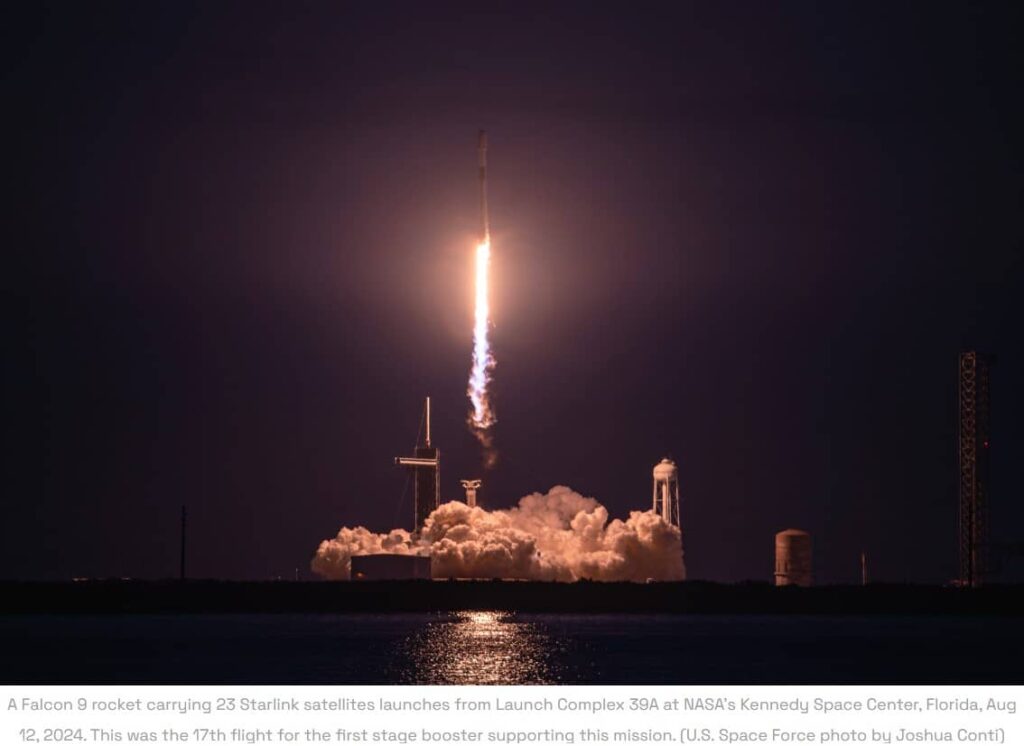SpaceX Successfully Catches Super Heavy Booster in Groundbreaking Starship Test

SpaceX reached a historic milestone on Sunday with the fifth test flight of its Starship rocket, the most powerful spacecraft ever built. For the first time, the rocket’s Super Heavy booster was successfully caught by the launch tower’s “chopstick” arms, marking a significant advance in reusable rocket technology.
The 400-foot-tall Starship launched from SpaceX’s Starbase facility in South Texas at 8:25 a.m. EDT (7:25 a.m. local time). About seven minutes into the flight, the 232-foot Super Heavy booster returned to the launch site, hovering near the tower before being caught by its mechanical arms, known as “Mechazilla.” This maneuver marked the first successful recovery of the booster directly at the launch pad.
Mechazilla has caught the Super Heavy booster! pic.twitter.com/6R5YatSVJX
— SpaceX (@SpaceX) October 13, 2024
The precision of the catch… 🔥
— Everything SpaceX (@spacex360) October 13, 2024
📹: SpaceX highlights reel pic.twitter.com/SfY7nTl4yi
“The tower has caught the rocket!” SpaceX CEO Elon Musk announced on social media platform X (formerly Twitter). “A big step towards making life multiplanetary was made today.”
Kate Tice, SpaceX’s quality systems engineering manager, called the event “a day for the engineering history books,” as employees at SpaceX’s headquarters in Hawthorne, California, erupted in celebration. “On the first-ever attempt, we have successfully caught the Super Heavy booster back at the launch tower,” Tice said during the live broadcast.
In addition to the booster recovery, the mission had a second key objective: to send Starship’s upper stage, known as Ship, to space and return it to Earth. The upper stage completed its mission, splashing down in the Indian Ocean about an hour after liftoff.
This test marks a major breakthrough for SpaceX’s Starship program, which aims to develop fully reusable spacecraft capable of carrying astronauts and cargo to the Moon, Mars, and beyond. NASA Administrator Bill Nelson congratulated the SpaceX team, noting that continued Starship testing is crucial for future missions, including NASA’s Artemis program to return astronauts to the Moon.
Sunday’s success followed four previous Starship test flights that ended in failure, with rockets either exploding or crashing into the sea. SpaceX made several upgrades to the vehicle after the last test in June, including improvements to the rocket’s software and heat shield.
While SpaceX has been recovering smaller Falcon 9 rocket boosters for nearly a decade, landing them on floating platforms or concrete pads, catching a massive rocket like Super Heavy at the launch pad represents a significant advancement in reusability. This innovation is expected to reduce turnaround time between flights and lower costs, a critical step for future space exploration.
Musk confirmed that the captured booster was in good condition, with only minor heat damage to some of the outer engines. “That can be easily fixed,” he said, highlighting the importance of reusability in achieving SpaceX’s long-term goals for sustainable space travel.

